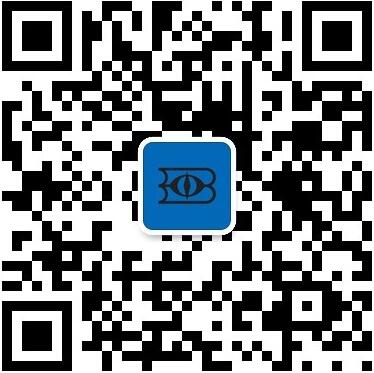【国外标准】 Standard Test Method for Reaction Induction Time by Thermal Analysis
本网站 发布时间:
2024-02-28
开通会员免费在线看70000余条国内标准,赠送文本下载次数,单本最低仅合13.3元!还可享标准出版进度查询、定制跟踪推送、标准查新等超多特权!
查看详情>>
适用范围:
5.1 This test method measures the time to extrapolated onset of an exothermic reaction under constant temperature (isothermal) conditions for reactions which have an induction period, for example, those which are catalytic, autocatalytic, or accelerating in nature or which contain reaction inhibitors.5.2 The RIT determined by this test method is an index measurement that is useful for comparing one material to another at the test temperature of interest and in the same apparatus type only.5.3 This test method is a useful adjunct to dynamic thermal tests, such as Test Method E537, which are performed under conditions in which the sample temperature is increased continuously at constant rate. Results obtained under dynamic test conditions may result in higher estimates of temperature at which an exothermic reaction initiates because the detected onset temperature is dependent upon the heating rate and because dynamic methods allow insufficient time for autocatalytic reactions to measurably affect the onset temperature.5.4 RIT values determined under a series of isothermal test conditions may be plotted as their logarithm versus the reciprocal of the absolute temperature to produce a plot, the slope of which is proportional to the activation energy of the reaction as described in Test Methods E2070.5.5 This test method may be used in research and development, manufacturing, process and quality control, and regulatory compliance.5.6 This test method is similar to that for oxidation induction time (OIT) (for example, Specification D3350 and Test Methods D3895, D4565, D5483, D6186, and E1858) where the time to the oxidation reaction under isothermal test conditions is measured. The OIT test method measures the presence of antioxidant packages and is a relative measurement of a material’s resistance to oxidation.1.1 This test method describes the measurement of reaction induction time (RIT) of chemical materials that undergo exothermic reactions with an induction period. The techniques and apparatus described may be used for solids, liquids, or slurries of chemical substances. The temperature range covered by this test method is typically from ambient to 400 °C. This range may be extended depending upon the apparatus used.1.2 The RIT is a relative index value, not an absolute thermodynamic property. As an index value, the RIT value may change depending upon experimental conditions. A comparison of RIT values may be made only for materials tested under similar conditions of apparatus, specimen size, and so forth. Furthermore, the RIT value may not predict behavior of large quantities of material.1.3 The RIT shall not be used by itself to establish a safe operating temperature. It may be used in conjunction with other test methods (for example, Test Methods E487 and E537, and Guide E1981) as part of a hazard analysis of a particular operation.1.4 This test method may be used for RIT values greater than 15 min (as relative imprecision increases at shorter periods).1.5 This test method is used to study catalytic, autocatalytic, and accelerating reactions. These reactions depend upon time as well as temperature. Such reactions are often studied by fixing one experimental parameter (that is, time or temperature) and then measuring the other parameter (that is, temperature or time). This test method measures time to reaction onset detection under isothermal conditions. It is related to Test Method E487 that measures detected reaction onset temperature under constant time conditions1.6 The values stated in SI units are to be regarded as standard. No other units of measurement are included in this test method.1.7 This standard does not purport to address all of the safety concerns, if any, associated with its use. It is the responsibility of the user of this standard to establish appropriate safety, health, and environmental practices and determine the applicability of regulatory limitations prior to use.1.8 This international standard was developed in accordance with internationally recognized principles on standardization established in the Decision on Principles for the Development of International Standards, Guides and Recommendations issued by the World Trade Organization Technical Barriers to Trade (TBT) Committee.
标准号:
ASTM E2046-19
标准名称:
Standard Test Method for Reaction Induction Time by Thermal Analysis
英文名称:
Standard Test Method for Reaction Induction Time by Thermal Analysis标准状态:
Active-
发布日期:
-
实施日期:
出版语种:
- 推荐标准
- AS 1012.19-1988 Methods of testing concrete Accelerated curing of concrete compression test specimens (laboratory or field) - Hot water and warm water methods
- AS 1418.19-2007 Cranes, hoists and winches Telescopic handlers
- AS 2001.7.19-1990 Methods of test for textiles Quantitative analysis of fibre mixtures - Binary mixtures of chlorofibres (homopolymers of vinyl chloride) and certain other fibres (method using concentrated sulfuric acid)
- AS 2359.19-2008 Powered industrial trucks Additional stability tests for industrial variable-reach trucks handling freight containers of length 6 m and above
- ASTM D3550/D3550M-17 Standard Practice for Thick Wall, Ring-Lined, Split Barrel, Drive Sampling of Soils
- ASTM D3551-17 Standard Practice for Laboratory Preparation of Soil-Lime Mixtures Using Mechanical Mixer
- ASTM D3552-17 Standard Test Method for Tensile Properties of Fiber Reinforced Metal Matrix Composites
- ASTM D3554-20e1 Standard Specification for Track-Resistant Thermoplastic High-Density Polyethylene Insulation for Wire and Cable, 75 °C Operation
- ASTM D3556-23 Standard Guide for Deposition on Glassware During Mechanical Dishwashing
- ASTM D3557-17 Standard Test Methods for Cadmium in Water
- ASTM D3561-16(2021)e1 Standard Test Method for Lithium, Potassium, and Sodium Ions in Brackish Water, Seawater, and Brines by Atomic Absorption Spectrophotometry
- ASTM D3562-22 Standard Performance Specification for Woven Drycleanable Coat Fabrics
- ASTM D3564-22 Standard Practice for Application of Floor Polishes to Maintain Vinyl Composition Tile or Flooring
- ASTM D3574-17 Standard Test Methods for Flexible Cellular Materials—Slab, Bonded, and Molded Urethane Foams
- ASTM D3575-20 Standard Test Methods for Flexible Cellular Materials Made from Olefin Polymers
 购物车
购物车 400-168-0010
400-168-0010













